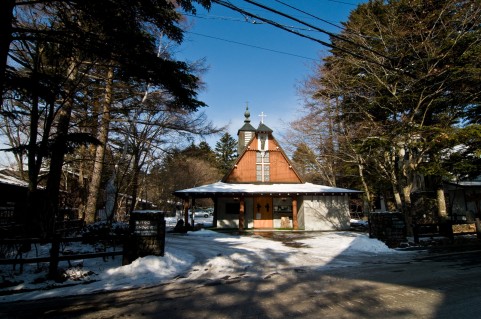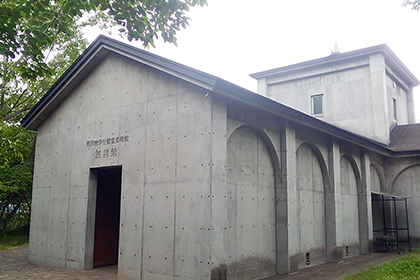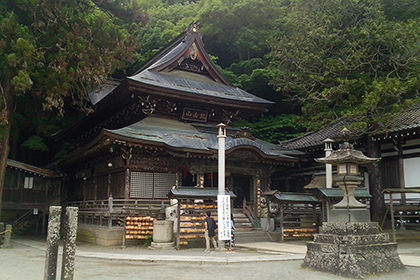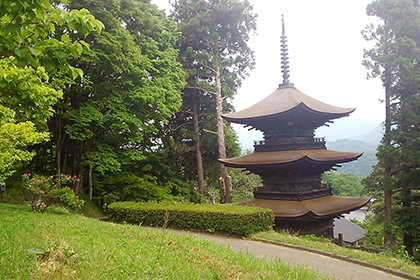
Matsuba Taxi
Komoro Suburban Course

Page menuopen
Other pagesopen
[D1] Komoro Suburbs Calming Stage Karuizawa Walking Course 4 Hours
- [Departure] Sakudaira Station
- 20 Min.
- A Dream Harvest Farm 30 Min.
- 15 Min.
- B Shinrakuji Temple 30 Min.
- 15 Min.
- C Oiwake-Shuku 15 Min.
- 15 Min.
- D Kumoba Pond 10 Min.
- 20 Min.
- E St. Paul’s Church 30 Min.
- 10 Min.
- [Arrival] Sakudaira Station
| Standard (four/five seater) |
Jumbo (nine seater) |
|---|---|
| ¥30,000 | ¥42,400 |
ADream Harvest Farm
Visitors can pick the Earth’s natural gift — lavender. You can come across over 300 types of herbs here. The healthy herbs raised in the highlands absorb plentiful solar energy, weaving together an artistic tapestry of colors and smells.BShinrakuji Temple
Visitors step through a thatch-roofed deva gate and climb a set of stone stairs lined densely with cedar trees unfolding before the approach to the premises of Shinrakuji. This is the oldest temple in the Karuizawa area, opened in the first year of the Yomei Era (circa 585 CE). The temple was built for prayers to quell the eruptions of Mt. Asama.COiwake-Shuku
Oiwake prospered as the largest outpost town in the Edo Era. Oiwake is also a place of literature, beloved by many literary figures such as Tatsuo Hori.DKumoba Pond
Kumoba Pond, also known by its nickname of “Snowflake,” is an area that is perfectly suited for a stroll and a timeout. It is absolutely vibrant year-round as it shows off the face of the seasons, steeped in deep green in the early summer and painted with the red of the surrounding tree leaves during the autumn.ESt. Paul’s Church
A beloved location that can even be called the symbol of old Karuizawa.[D2] Komoro Suburbs The Kamakura of Shinshu — Old Temple Tour Walking Course 6 Hours
- [Departure] Sakudaira Station
- 40 Min.
- A Mugonkan 20 Min.
- B Zensanji Temple 30 Min.
- 15 Min.
- C Chuzenji Temple 30 Min.
- 15 Min.
- D Kitamuki Kannon 30 Min.
- 10 Min.
- E Anrakuji Temple 20 Min.
- 10 Min.
- F Jorakuji Temple 20 Min.
- 10 Min.
- G Daihoji Temple 20 Min.
- 30 Min.
- [Arrival] Sakudaira Station
| Standard (four/five seater) |
Jumbo (nine seater) |
|---|---|
| ¥45,000 | ¥63,600 |
AMugonkan
The Mugonkan museum is an art museum that was built to commemorate the spirit of art students lost in World War II.BZensanji
The main hall of Zensanji is an ancient temple located in the foothills of Mt. Tokko. The temple is said to have been founded as a hallowed ground for Homa ritual training by High Monk Kukai in 812 CE. Walking along the temple’s approach walkway and going through the gate reveals a beautiful three-storied pagoda with stone stairs extending out towards the south and ginkgo trees occupying the scenery in all directions.CChuzenji
Chuzenji is a temple that was established in 784 by the founder of Nikko, High Monk Shodo. It is a branch temple of the world heritage site, Nikko ZanrinnojiDKitamuki Kannon
Kitamuki Kannon is a sacred ground established by the priest, Jikaku Daishi Ennin, the leader of Enryakuji Temple on Mt. Hiei in 825 at the beginning of the Heian Period.EAnrakuji
Anrakuji is an extremely valuable National Treasure, three-storied pagoda and is the only octagonal spiritual tower in Japan. The pagoda is located halfway up the mountain, climbing up from the main hall of the temple and is stepped in the green of pine trees, giving the atmosphere a solemn, stately feel. The temple is thought to have been in the Kamakura Period (1185 to 1333 CE).FJorakuji
In 825, the year in which Kitamuki Kannon-Do was established, Jorakuji was built as one the three “rakuji.” It is the honbo (where the monks lied) of Kitamuki Kannon, and its enshrined deity, “the Discerning Amitabha,” is rare in Japan.GDaihoji
The three-storied pagoda of Daihoji has been beloved by the name of the “Pagoda of Reward.” One of the temple’s major characteristic features is its calm atmosphere which came about with changes to the shape of the temple as the initial load was particularly heavy and was redone with a simple two-bracket support column. The harmony with the surrounding wind direction has to be mentioned in a discussion of the pagoda’s beauty.Page menuopen
Other pagesopen



